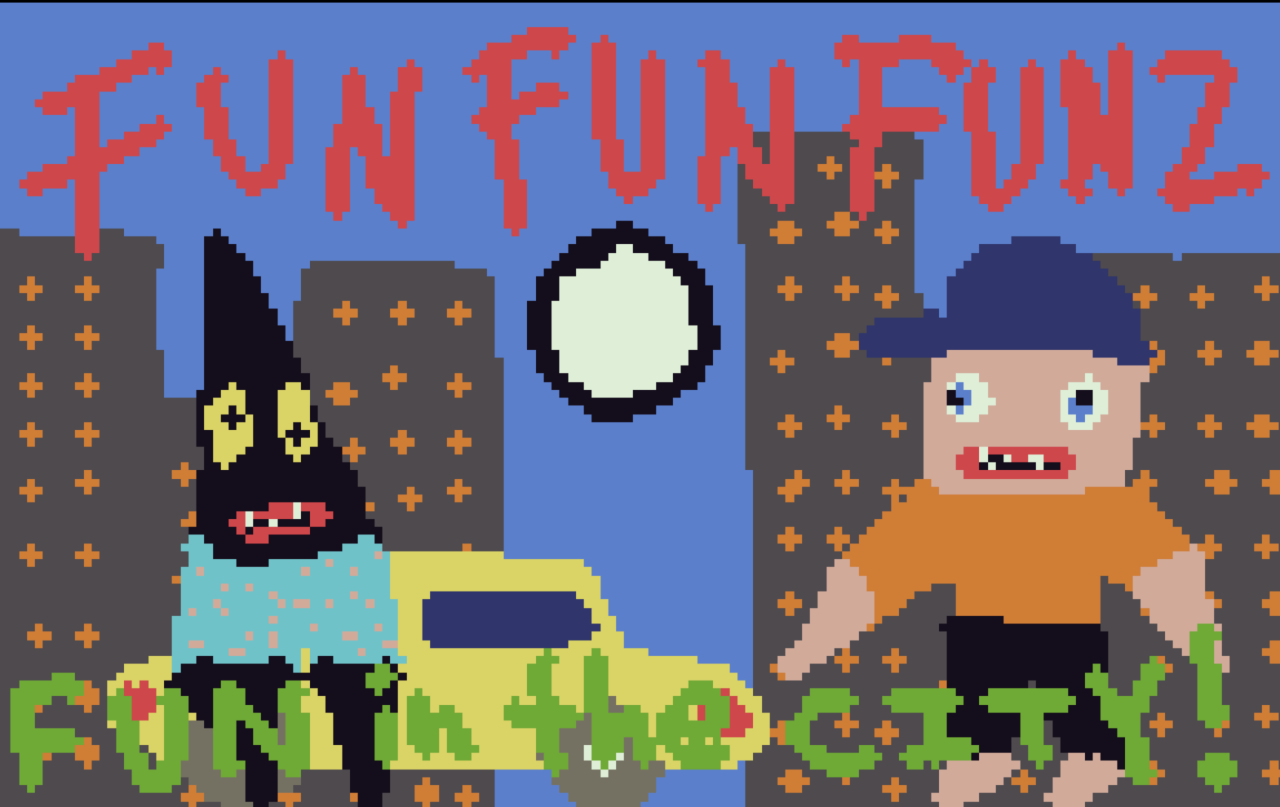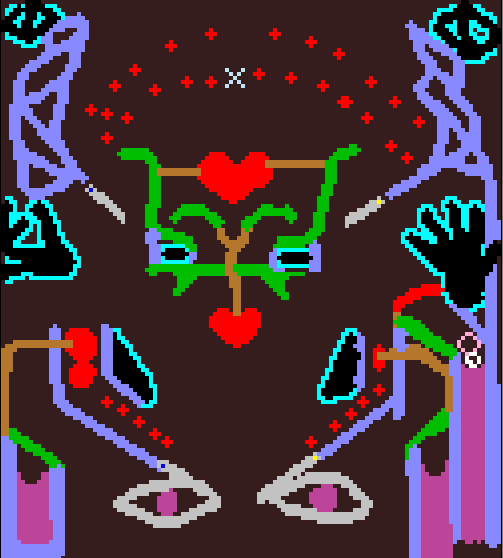I will often ask myself, “Does my complete disinterest in code prevent me from participating creatively in the 21st century?” For many, like myself, hoping to make interactive work, the ability to code or not is a barrier of entry to full involvement in the techno-landscape. And it’s not because we couldn’t sit down, shut the blinds, and force functions and variables to make sense, but because programming makes our brains automatically shutdown. That’s just how it is. I would probably say we are a lost cause. But I won’t—turns out there are exciting alternatives. Ones that open up the interactive playground to everyone, no text-based coding required. All you have to do is draw.

It happened while on a research mission. I was trying to find a solution to my I-hate-code-but-love-making-games-and-interactive-stories conundrum when I stumbled onto 16 rooms 16 doors 16 colors. Posted on glorioustrainwrecks.com, it was a seemingly endless point-and-click adventure through abstract pixel art. The aesthetic screamed #altgames (I guess that’s what punk-ass games are called now), but it wasn’t like any others I’d seen. Wide-eyed, I kept asking, “What the hell is this?” The answer came in the surrounding black frame of the window, a singular link: www.flickgame.org.
Flickgame is part of a trio of engines released to the public a few months ago by Stephen Lavelle, an independent game designer who publishes work under the label “Increpare,” which is Latin for “rebuke.” Besides flickgame, the trio includes plingpling, a draw-your-own pinball game engine, and tinychoice, a hypertext game engine. Out of the three, flickgame and plingpling are the most exciting. With no “about” or “mission” page and no need for tutorials, flickgame and plingpling consist of a single control panel where the only technical requirement is drawing.

Drawing and games enjoy a long and close relationship. From children’s sidewalk games of hopscotch drawn in chalk, to the exquisite corpse method of the surrealists (a derivative of the parlour game, Consequences) to mass-marketed games like Telestrations, drawing is a part of how games are made, as well as how you play them. But with videogames, they are primarily built with text-based code. Flickgame and plingpling are a part of changing that.
To make a flickgame, you choose one of the 16 available colors, draw something on the canvas and then connect your drawing’s color to any of the 16 available frames. Plingpling is a little different: colors are automatically associated with a pinball game function. You select which array of colors to use then draw in your flippers, walls and targets. Each, in their own way, feel like the mutant children of Hypercard and MS Paint, and their existence is expanding the pool of potential storytellers and game-makers enormously.

Not to be confused as a trend, in 2013 Pixel Press ran a successful Kickstarter for a “draw your own video game” system, where drawings made on specialized graph paper are translated into a digital editor for further manipulation. Those interested in the future of interactive storytelling and game design should take note: The power of drawing games into existence is just beginning to realize its potential. In the meantime, I am just over-the-moon excited to have found flickgame and plingpling, software that allows us non-text-based-coders (read: people who like to draw) to participate in all the digitally interactive fun of the 21st century.
FYI, and very NSFW: http://plingplingporn.tumblr.com: a tumblr dedicated to porno pinball games made with plingpling.
